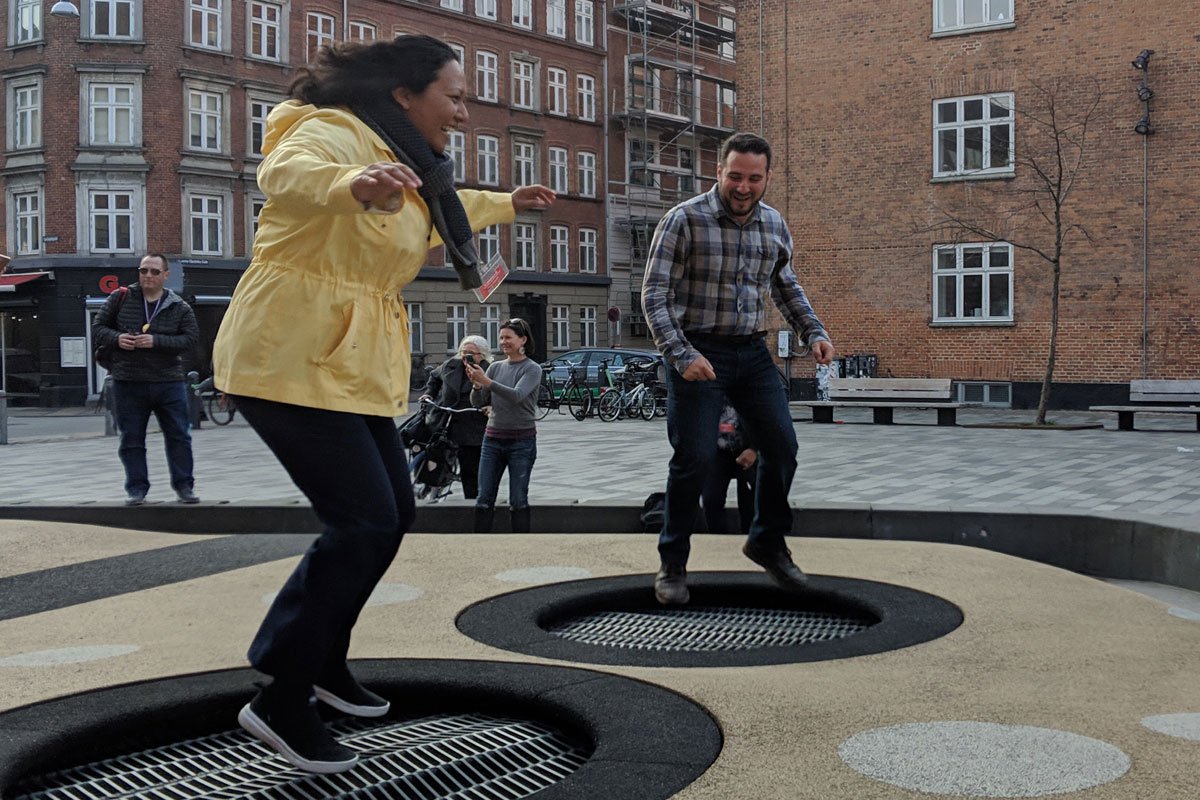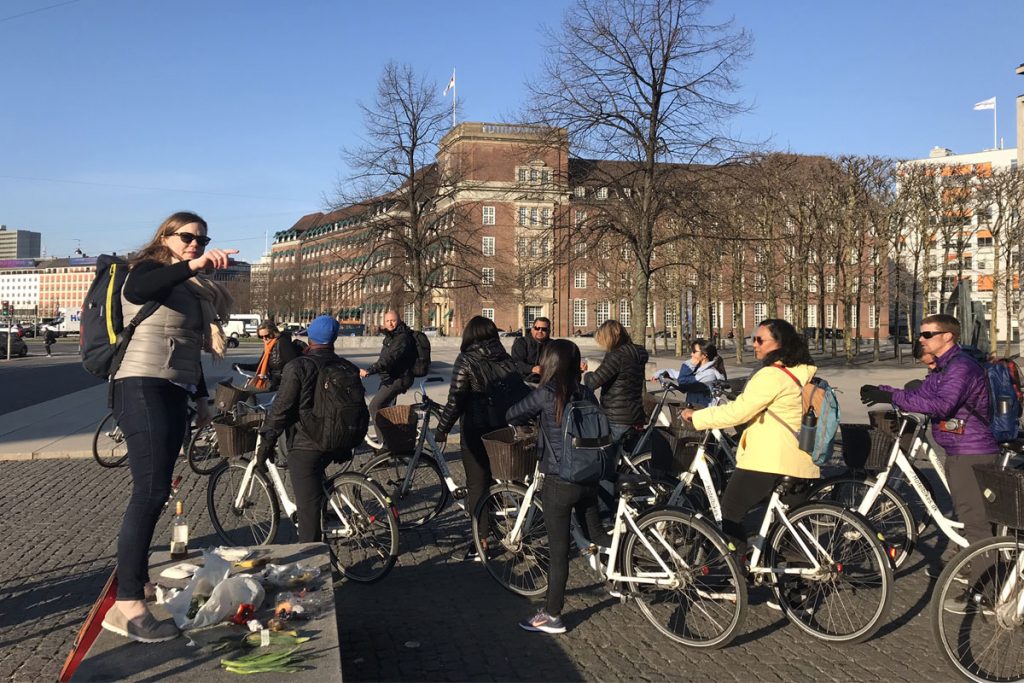
03 May An Interview with Camille Llanes-Fontanilla, Executive Director of SOMOS Mayfair, San Jose, CA
In 8 Questions, 8 80 Cities asks amazing partners we’ve worked with, or amazing people doing amazing work 8 questions about their passions, their history and their amazing-ness. And then we ask them to suggest a question for our next interviewee.

This week, 8 80 Cities Project Manager David Simor spoke to Camille Llanes-Fontanilla, Executive Director of SOMOS Mayfair, a position she has held for six years. With 13 years of experience in non-profit management, Camille has worked with community residents and groups across San Jose. We talked with Camille about her recent trip to Copenhagen, how SOMOS Mayfair helped reform a local school district, and how co-creation is a key ingredient in successful community engagement.
- Tell us a little about SOMOS Mayfair and the work you do there.
Camille: SOMOS Mayfair is a 22-year-old grassroots community organizing non-profit based in the Mayfair neighbourhood in East San Jose. We are nationally known for bridging community organizing and direct service delivery for greater impact. Everything we do is centered on a ‘peer education’ model, where we work with communities on understanding in-depth issues that affect them every day and then work with them on being catalysts for change. We utilize this model on a whole host of issues ranging from community development to early education. Now we’re really trying to figure out what we can do in the planning realm to combat displacement.
8 80 Cities: Is the challenge of encroaching gentrification prompting this new area of focus for SOMOS?
Camille: Every few years we undertake a community action to try and aggregate the feelings, beliefs and challenges of residents living in East San Jose. A few years ago, for example, we knocked on 650+ doors in the neighborhood and gathered information on people’s perceptions of community safety, education and health & wellness. We did another round of community engagement with voice recordings, photos and geo-tagging locations of neighborhood strengths, access and challenges. The pressures of the housing crisis really become apparent through that exercise. Because we’re a small organization and want to be nimble enough to respond to changing needs, we’re trying to figure out what our role can be without changing ourselves to a housing organization. So how can we use our model of community engagement and community action to be helpful in this new emerging issue area?
8 80 Cities: How many times have you done that large scale community engagement action of talking to hundreds of residents but in a one-on-one manner?
Camille: I think in our 22-year history, there have been at least five pivotal initiatives where we’ve done a really broad temperature checking of the community.
8 80 Cities: Have you found that over the years there have been issues that have faded to the background as the gentrification and housing concerns have come to the forefront?
Camille: Education remains a top priority. I believe this stems from the fact that we are primarily in a high immigrant community and so families tend to have high hopes for the future. They look forward with hope and optimism. Thus, investing in their children and their futures is and always will be most important. But with the high cost of living, housing and displacement have also become top of mind. Unfortunately, this has led to less focus on environmental justice and health (physical activity and eating healthier).

- Maybe you’ve touched on this already, but based on your work with SOMOS Mayfair, what is the single biggest issue facing San Jose right now?
Camille: I think there are two things if you’ll indulge me.
8 80 Cities: Of course, we love being indulgent!
Camille: Great! Number one is the affordability crisis. A report just came out today saying that you need to earn $240,000 a year to afford buying a home in San Jose. That’s a huge thing that is affecting every other issue. Families can no longer afford to live here, which means school districts are losing students which mean they lose state funding which makes the quality of education worsen. The other big issue that I see confronting us as a city is the lack of cohesiveness and political will to address our major challenges. We’re a very diverse city and there’s a lot of barriers getting everyone to coalesce and champion shared values and visions. Everyone agrees affordability is a major issue but there’s a lack of agreement on how we should address it.
- SOMOS Mayfair has created a best practices guide to community engagement. Can you share how that came about and the role engagement plays in building that shared vision?
Camille: We have been very nimble over our 22-year history acknowledging that if we’re really going to allow systems, in this case, the city or county, to serve the people they intend to serve, then the voice and needs of the community need to be the focus. Over the years we’ve convened residents and institutions to come to the table and found some learnings that are fundamentally about mutual respect and providing the spaces and opportunities to co-create, to see each other as leaders and to have the time for dialogue. We need to have engagement where solution finding is the outcome vs the typical two-minute public comment where people are there to say their piece and defend their stance. We wanted to offer a different philosophy that invites people into a conversation and figure out how to find mutual trust and mutually beneficial wins.
8 80 Cities: Are there any projects that come to mind that embody those best engagement practices?
Camille: The thing I feel most proud of was a two-year campaign we waged to bring light to governance issues in our school district. One of the districts in East San Jose had long been embattled with budget cuts, very under-resourced. For two years, SOMOS was the convener, organizing together parents and youth and teachers and administrators and non-profits – basically, anyone who was working in the school district – to come to the table to understand the historical issues at the root of what was happening in the district. We were able to create a kids first agenda. This brought a lot of media attention, which lead to political wins, like getting the Mayor and Vice Mayor on board. The tent kept getting bigger and more and more people understood the true issues. All of this culminated in the last election cycle, where the people of our community elected new leadership in the district. As a non-profit, we were able to convene spaces in a way that allowed parents from very different socio-economic situations to sit together. We built something together, rather than off the backs of each other. The trust and relationship building that the campaign created is now being tapped on other issues by the school administration. The relationships live on.

- Shifting gears, you recently went on a four-day study tour to Copenhagen, Denmark. Going into the trip, what were you expecting to see?
Camille: A ton of bikes! Which I did. I expected to learn how urban planning and design can move more and more people quickly and efficiently. I think I was really looking for indicators of the amazing community trust I was told exists in Copenhagen, and what that looks like in action.
- What were your major takeaways from the trip?
Camille: I think personally it was very eye-opening how much time we spent outside. I was born and raised in East San Jose. I’ve lived in the Bay Area my entire life and I’ve never spent as much time outside as I did those four days. The way our cities are built here is not conducive to getting people outside of their cars and outside of buildings. I was enthralled by the little spaces of joy dotted around the city. In Silicon Valley, for my own kids, there aren’t a lot of spaces to be joyful. It’s so easy here for kids and parents to be sucked into the rat race of just making money and earning enough to survive. It was exciting to see how many spaces for joy and connection there are. Connected to that is how intentional the visioning, goal setting and community participation is.

- We’ve talked a lot about what you learned from Copenhagen. What is one thing Copenhagen could learn from San Jose?
Camille: My biggest question leaving Denmark was understanding how more diverse populations are integrated and celebrated there? I’ve read a few articles since returning and it seems that celebrating diversity isn’t something they do all that much. So, Copenhagen could look to San Jose to see what a large municipality with people from all corners of the world looks like.
- What is your favourite thing about Mayfair?
Camille: I am in love with all the different cultural assets we have. There is no other neighbourhood that I know of that is bookended by 20 acres of an open park and urban farm0- 100% open and accessible parks, farms and gardens. Mayfair’s bookended by that to south. To the north is a six-acre cultural institution called the Mexican Heritage Project which provides music, dance and arts lessons for children and families rooted in Mexican-American culture but is supplemented by diversity as well, such as Brazilian dance class and African drumming and Aztec indigenous dance. That the area is so committed to handing that history and culture to the next generation is was I love the most about Mayfair.
- From Kristyn Wong-Tam, Toronto City Councillor: “How would you demonstrate allyship?”
Camille: In light of the opportunities and challenges I just shared with you; I think allyship is about building a larger table. Not just for leaders but for everyday folks as well. Get them at the same table so we can develop the solutions to the dire problems we’re facing. We need allyship from multiple different socioeconomic and cultural backgrounds to really co-create, design and center the solutions arising from the needs of the people. Copenhagen’s model of co-creation is one that I think can be impactful if it reflects true diversity.
8 80 Cities: What question would you have for our next interviewee?
Camille: My question would be how do we create spaces that support liberation look like?



